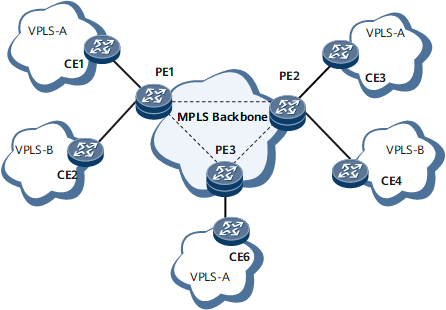CE Ping
Background
On an MPLS network, a PE can send a CE Ping packet to a CE in a specified BD to check reachability to the CE. If the PE can receive a response packet from the CE, the PE determines that the CE is reachable.
Usage scenarios
In a VSI scenario
In a traditional Ethernet service access model, VLAN services can be carried on VSIs on a VPLS network. A PE on the VPLS network sends a CE Ping packet to check CE reachability.
As shown in Figure 1, CE1 and CE3 are user-side access devices at both ends of the VPLS network and are directly connected to the VPLS network. The CE ping process is as follows:
- PE1 pings a CE (CE3 in this example) and sends ping packets destined for CE3's IP address. Because PE1 does not know the PE to which CE3 is connected, PE1 broadcasts an ARP request within the VPLS network to request the MAC address corresponding to the IP address of CE3.
- All CEs receive the ARP request messages. When CE3 discovers that the ARP request is destined for itself, it sends an ARP reply. When other CEs receive the ARP request, they discard the request.
After PE1 receives the ARP reply from CE3, PE1 determines that it can reach CE3.
In an EVC model, CE ping can also be used to check the link reachability between a PE and a CE in a specified BD. The implementation process is similar to that in a traditional Ethernet service access model. For details about EVCs, see EVC Description.
